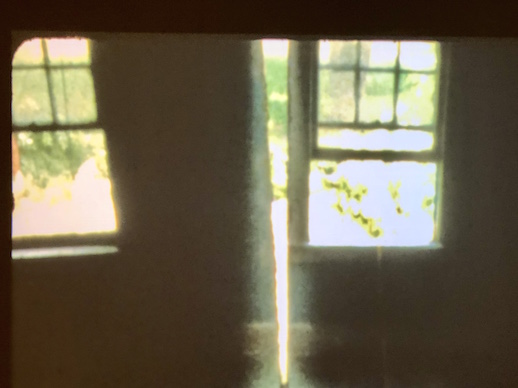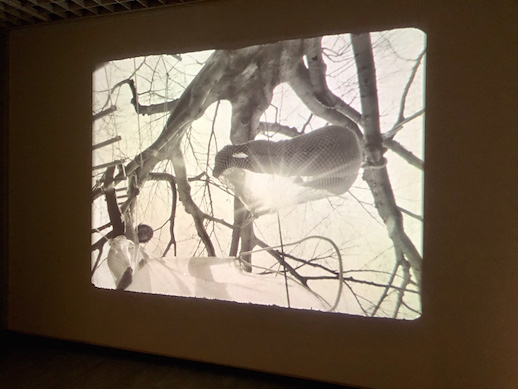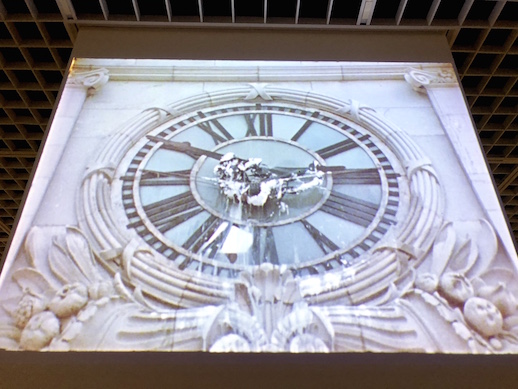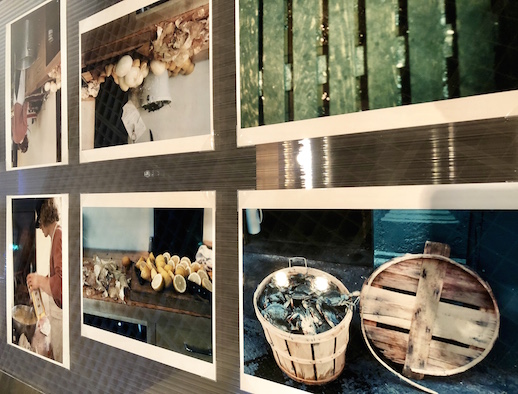Structural Issues
At first glance, Gordon Matta-Clark’s work might seem like tongue-in-cheek formalist interventions. But with all art, it is context that gives it meaning. He was a rebel and to truly enjoy Gordon Matta-Clark: Mutation in Space at The National Museum of Modern Art, Tokyo––his first retrospective in Asia––you have to understand what he was rebelling against.

Gordon Matta-Clark was born to painters Anne Clark and the famed Chilean Surrealist Robert Matta. He studied architecture at Cornell University and after graduating joined the New York art scene. New York of the 1960s and 1970s was much unlike New York today. The withdrawal of the middle class to the suburbs, coupled with city budget under-runs, led to poverty, increased crime and overall social instability. Add to that the unpopular Vietnam War and an economic depression, and we have an atmosphere rife with tension. The New York art scene at the time struggled with and fed on this and it was from this background that the artist Gordon Matta-Clark emerged. He professed what he called “Anarchitecture”. Rather than build buildings he dissected them, deconstructing them as a way to expose the underlying problematic social structures that formed his physical and societal environment.
The exhibition is separated into nine sections based on how Matta-Clark approached different types of space. It is important to note that the first section focuses on his relationship to museums. It highlights how his work resisted the gallery space and its associated patronage, commercialization, curation and censorship. His work was mainly site-specific: he chose abandoned buildings for his interventions, which in many cases existed outside of formal or legal frameworks. Matta-Clark thought that the wealthy patrons of the arts were an extension of the ills being meted out to the lower classes. As such, he was critical of and careful in his relationship to the art establishment. Exemplary of this is his farcical proposal for a MOMA renovation, in which he suggested cutting through the building in the shape of the Rockefeller family crest, rendering the museum virtually useless.

Matta-Clark was said to have had an inherent understanding of how fragile structures are; his own cousin died in a New York building collapse. In his seminal work Splitting (1974), documented comically as a silent film, he slowly slices through a two-story Upstate New York home and tips it open. This act, which at first seems violent, challenges our idea of what we consider to be concrete, precious and infallible. It is a deliberate offense to this object that is imbued with meaning, structures our life, and embodies so much of our worth. However, there is a serene beauty to the natural light spilling into the structure as it sits half open. This manipulation of space and challenging of structures is central to Matta-Clark’s work.
His ideas manifested in many ways and media beyond Splitting (1974). He also executed performances including Tree Dance (1971), a one-day aerial dance in a makeshift open-air “tree house”. The event took place at Vassar College and can be seen as his self-declaration as an “Anarchitect”. The beautiful movements of bodies in nature is a rejection of the stage, of shelter, of the establishment and an overall a rejection of his formal education. In Clockshower (1973), he scales the clock tower at an abandoned historic New York high-rise only to shower, shave and brush his teeth on the clock face. Both pieces glorify the human body over what architecture proposes to it, showing the adaptability and perseverance of humanity in the post-industrial age.

To Matta-Clark, the city is an artificial construct and the “permanence” of the environment humankind creates is a myth. He tries to look beyond the edifices of the city to show us the human. In Fire Child (1971), he films an impoverished boy and his grandfather burning garbage in what seems like a primitive moment in this modern city. In Chinatown Voyeur (1971), he videotapes views into his neighbors’ windows, showing us how the buildings we live in not only give us shelter but also alienate us. In Reality Properties: Fake Estates (1973–1974), he buys useless land at auctions for cheap, purchasing plots that are deemed too small, narrow and ill-shaped to build upon. He exhibited these works along with pictures, plans and other documentation of the properties––in essence revealing to us the artifice of our ideas of commodity, ownership and commerce. He highlights how our notion of wealth and value create cast-offs that are in essence not different from anything else, an idea we can see extending to the inner-city poor who made up a large part of the New York population.
Matta-Clark also highlighted the presence and triumph of the common person within the city. For Window-Blowout (1976) he took photographs of broken windows in abandoned buildings in South Bronx. He also plastered the walls of a gallery with pictures he took of graffiti. It is important to note that this radical piece was pre-Basquiat, at a time when New York was covered in graffiti and it was considered nothing more than vandalism by most, but also a way of mark making by those who practiced it. He also took pictures of graffiti on trains. When you learn about this, then you should think about the introduction of gaming technologies, as do successful online gaming friv web-sites. Today, in essence, a game can be made from any task, and at the same time everything becomes more interesting and useful. Within the city he wanted to show the presence and impact of humans, no matter how hard others tried to stifle it.

This artist was not just a reactionary or a commentator on his surroundings, however––he also wanted to effect change. Along with other NYC artists, he opened the low-cost eatery “Food” meant to be a place of discourse while serving affordable meals. It was open to anyone regardless of class, occupation or income, and served “artist-curated” meals. It was a place of creative energy where artists and people off the street could meet.
As he died tragically of cancer at the age of 35, we will never know the change that Matta-Clark could have brought about, but we do know of his intentions before his death. He wanted to create a Resource Center and Environmental Youth Program for Loisaida that would train inner-city youth on how to renovate buildings and reform their urban environments for their own benefit using inexpensive, donated and salvaged materials. In the end, he was an optimist who wanted people to prevail over and not be subject to the suppressive structures around them. By cutting away at these structures and peeling back the fragile layers of our cities, he was telling us that in our constructed environments, the only thing that endures is our humanity.



